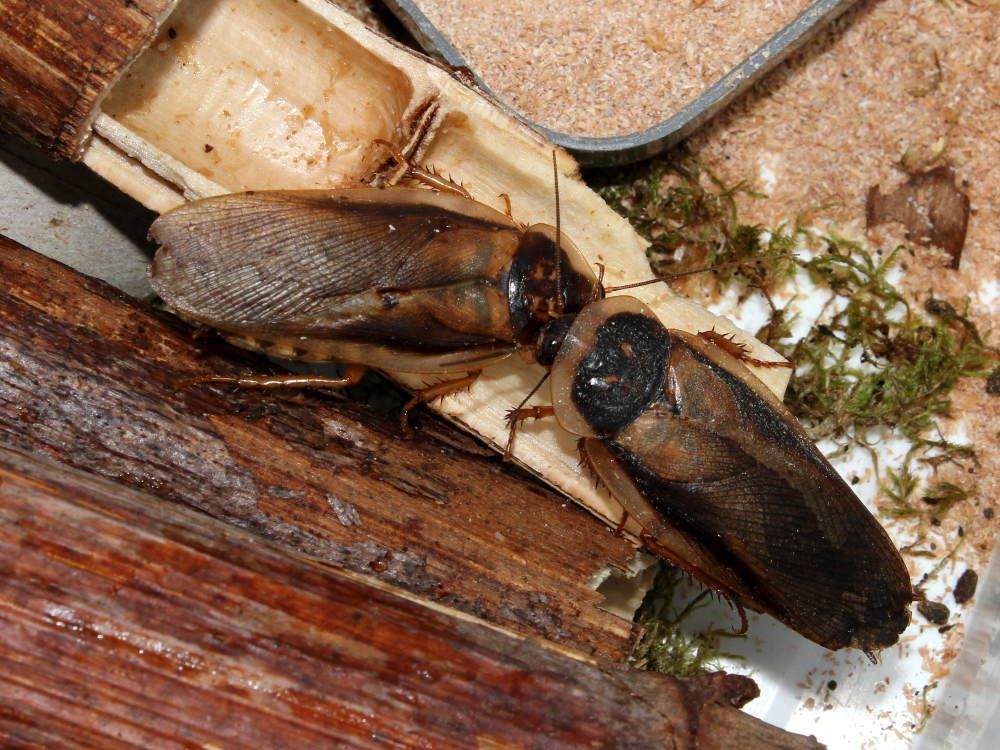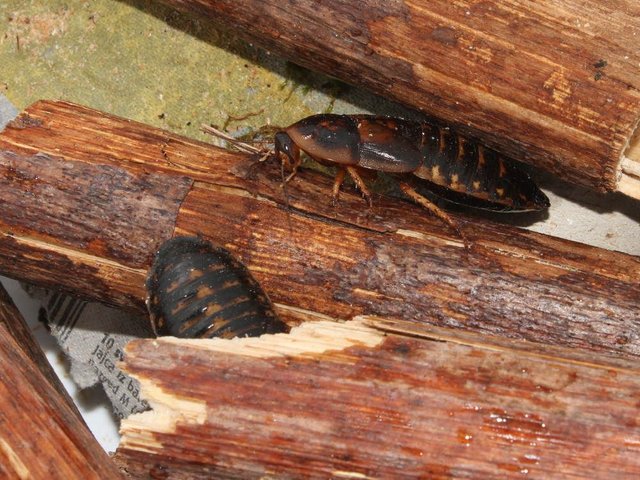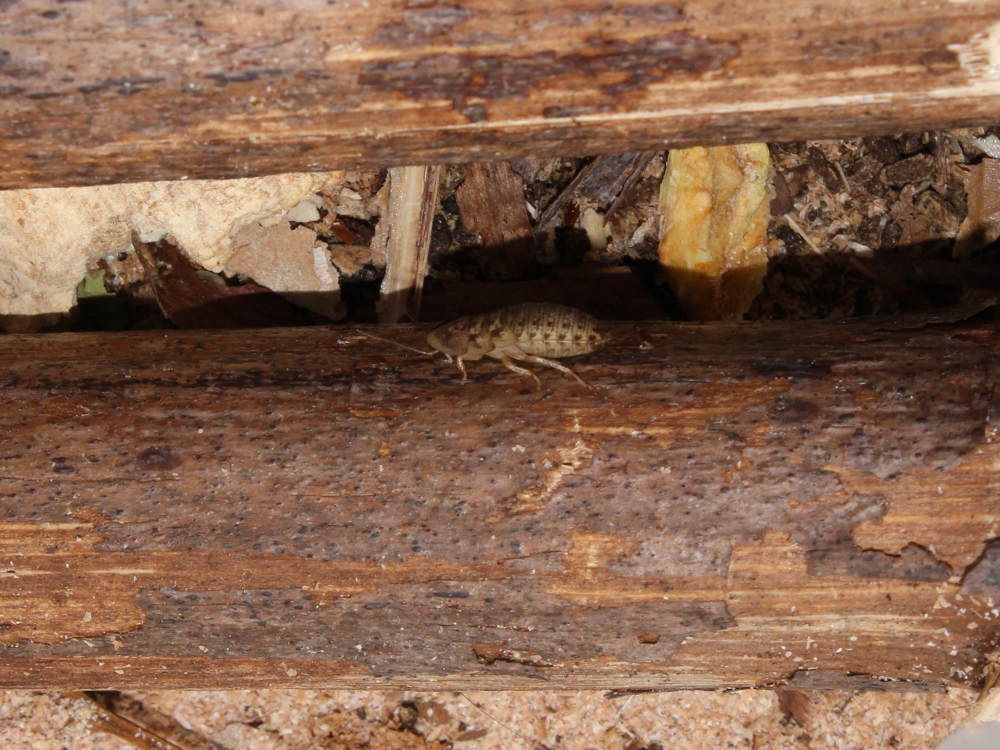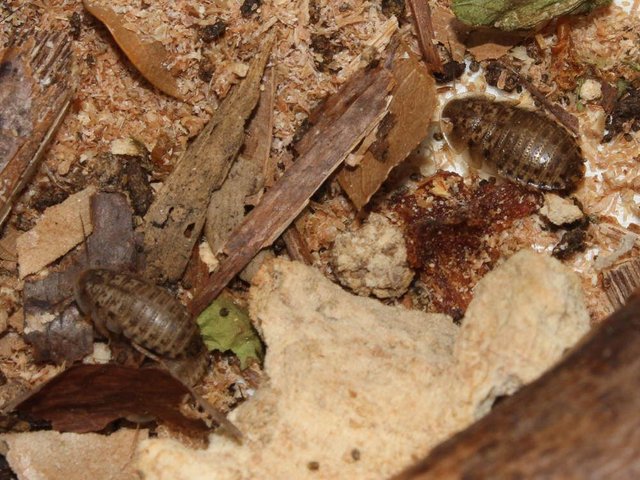Hello fellow Steemitarians!
Blaptica dubia roaches are clean and odorless creatures, extremely useful as a reptile, spider, bird, fish or amphibian live feed. Perhaps it's not bad for human consumption too, but I'm not willing to try them just yet. Perhaps fried with some mayo... Maybe someday. :)
They are great source of protein and have low chitin content.

(Male Blaptica dubia roaches)
I have started a small dubia roach colony recently. I have bought 13 female and 5 male Dubia roaches. Male to female ratio is not the best, but it should be OK enough for them not to get stressed. I am trying to determine how they will breed in their roachy environment. I'm feeding them wheat bran, vegetables and oranges as a source of water and as roach aphrodisiac. I intend to update the post as the project develops and as long as there is at least some interest from readers. Here are the results so far.

(Female Blaptica dubia roaches)
Like I mentioned, starting point was 13 females and 5 males (males mean nothing to the colony, well not entirely, they are sperm donors for the ladies)
Here are the resultsI am collecting in monthly intervals. I try to count the nymphs as accurate as possible, but I'm not Rainman and the buggers can be fast, can hide well and are extremely hard to count.
| Date | Adult females | Nymphs | Comments |
|---|---|---|---|
| October 30 2017 | 13 adult females | 0 nymphs | Starting date |
| November 30 2017 | 13 adult females | 58 nymphs | I moved the 1cm/0.5inch nymphs into separate container |
| so far in December | 13 adult females | 92 nymphs | next update on Dec. 30. |

(Dubia nymph on japanese knotweed stem)

(Two of young dubia roach nymphs)
I have only lost two females during the first 24 hours after I brought them home. After that, they seemed happy. At the beginning, there were some aborted ootheca, but nymphs appeared anyway. I have a feeling that there's a female that produces deformed ootheca and aborts them. Might be an old female. Nymphs are growing fast and seem to be happy in their new environment.
They live at around 29°C and 40% RH. I placed some japanese knotweed stems inside and they liked it more than their egg cartons. I'll add some more as the colony grows. They are just as easy to clean if not easier. The problem, however, is counting the nymphs. So far I can do it, but if it ends up impossible, I'll just change it back to the egg cartons.
I'll continue to update the research. If you have any ideas, comments or would like to know more details, please let me know. I will add some pictures as well. Have to get them together for a photo session. They don't like to be photographed. :)